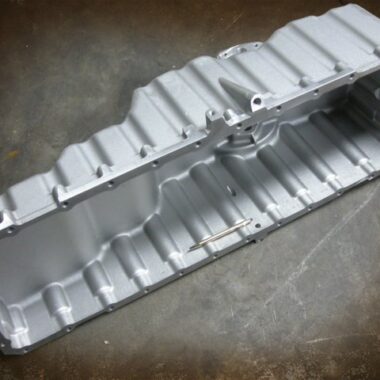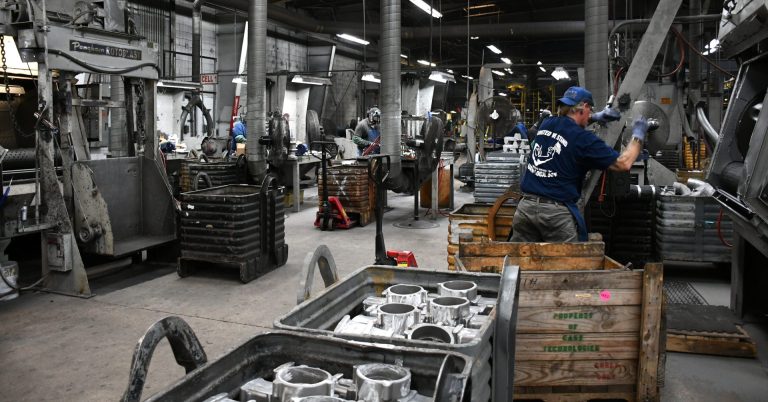Achieving Quality in Aluminum Casting: Expert Tips and Techniques
Wiki Article
Discovering the Numerous Techniques of Aluminum Spreading: A Comprehensive Overview
Aluminum casting stands as a basic procedure in the production of many products we run into daily, from complex automotive parts to home components. Comprehending the diverse techniques used in light weight aluminum casting is crucial for suppliers seeking accuracy and efficiency in their manufacturing processes - aluminum casting. As we start this exploration of the numerous techniques entailed in aluminum casting, we reveal a world where technology and tradition assemble to form the products that shape our modern-day world
Sand Casting Approach
Utilizing among the earliest and most widely utilized approaches in aluminum casting, the sand casting technique entails creating molds from a combination of sand and a binder material. This method is extremely functional, affordable, and appropriate for generating a wide variety of sizes and shapes, making it a prominent selection in numerous industries.
Aluminum, warmed to its melting factor, is then put into the mold and mildew, filling the dental caries. After solidifying and cooling down, the sand mold and mildew is escaped, disclosing the aluminum spreading. This technique permits for the production of intricate geometries and is appropriate for both high and low volume production runs.
Investment Casting Technique
Having actually explored the sand spreading approach, a refined strategy to light weight aluminum casting is the financial investment casting method, which offers unique benefits in terms of accuracy and surface area finish. Financial investment spreading, likewise known as lost-wax spreading, is a procedure that involves producing a wax pattern that is covered with a ceramic shell. When the covering is dried and solidified, it is heated up to remove the wax, leaving behind a hollow ceramic mold and mildew. Molten light weight aluminum is then poured right into the dental caries, filling the mold to develop the desired component.Furthermore, investment casting is understood for its superb dimensional precision and limited tolerances, making it a preferred method for generating components that require tight requirements. In general, the investment casting strategy is a functional and efficient technique for manufacturing high-quality light weight aluminum elements.
Permanent Mold And Mildew Process

Among the crucial benefits of the Permanent Mold And Mildew Process is its ability to generate parts with a finer grain structure, causing improved mechanical residential properties. Furthermore, the recyclable nature of the metal mold and mildew enables the manufacturing of a multitude of get rid of regular high quality. This method i was reading this is generally utilized in the automotive, aerospace, and aquatic industries for making elements such as engine pistons, wheels, and architectural parts. By leveraging the Irreversible Mold Refine, makers can achieve economical production of light weight aluminum parts with superb dimensional accuracy and surface area finish.
Pass Away Casting Strategy
In comparison to the Long-term Mold And Mildew Refine, the Die Casting Technique for light weight aluminum casting news involves using a multiple-use steel mold and mildew to produce complex components with high dimensional precision. This approach is widely used in different markets as a result of its ability to efficiently mass-produce complicated shapes with thin walls and outstanding surface coatings.Pass away casting commonly starts with the preparation of the steel mold, which is then sprayed with a lubricant to help with the removal of the solidified aluminum. The mold is closed, and molten aluminum is injected under high pressure into the cavity. Once the aluminum solidifies and cools down, the mold and mildew opens up, disclosing the finished part.
Among the vital benefits of die spreading is its high manufacturing price, making it a cost-efficient option for massive manufacturing. Furthermore, parts produced via die spreading show remarkable stamina and toughness compared to those made through other casting approaches. This strategy is specifically ideal for applications needing intricate designs, limited tolerances, and high repeatability.
Centrifugal Spreading Technique
Exactly how can the Centrifugal Casting Approach improve the performance and quality of light weight aluminum casting procedures? Centrifugal casting is a method that uses centrifugal pressure to distribute molten metal right into a mold and mildew cavity. This strategy offers a number of advantages over conventional spreading approaches.One trick advantage is the premium top quality of the spreadings created. The centrifugal force helps to get rid of porosity by pushing any kind of gas or contaminations in the direction of the center of the casting, causing a denser and much more uniform final item (aluminum casting). In addition, the rotational movement of the mold ensures an extra even distribution of the molten metal, resulting in enhanced mechanical homes and decreased flaws
Furthermore, the Centrifugal Casting Method is known for its performance. The fast solidification price accomplished through this published here process can add to reduced cycle times, making it an economical service for high-volume production. Additionally, the method enables the spreading of elaborate forms and thin-walled get rid of ease, expanding the style possibilities for suppliers. To conclude, the Centrifugal Spreading Technique attracts attention as a reputable strategy for boosting both the performance and top quality of light weight aluminum spreading procedures.

Final Thought
In verdict, the different techniques of light weight aluminum casting offer unique benefits and features for various applications. Sand casting offers flexibility and cost-effectiveness, financial investment casting allows for complex layouts, irreversible mold and mildew procedure makes sure high-quality finishes, pass away casting supplies high production prices, and centrifugal casting produces high-strength parts. Comprehending the distinctions in between these techniques can help makers choose one of the most ideal strategy for their certain casting needs.Having actually explored the sand casting approach, a refined technique to light weight aluminum casting is the investment spreading method, which provides unique benefits in terms of accuracy and surface finish. Investment spreading, additionally known as lost-wax casting, is a procedure that includes producing a wax pattern that is covered with a ceramic shell.How can the Centrifugal Casting Method improve the performance and quality of aluminum spreading procedures? In final thought, the Centrifugal Spreading Technique stands out as a trusted technique for enhancing both the efficiency and quality of light weight aluminum casting processes.
Sand casting supplies versatility and cost-effectiveness, investment casting allows for intricate styles, irreversible mold and mildew procedure ensures high-quality surfaces, die casting offers high manufacturing prices, and centrifugal spreading produces high-strength parts.
Report this wiki page